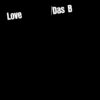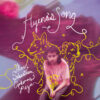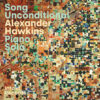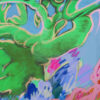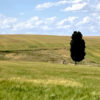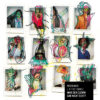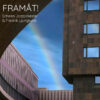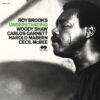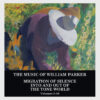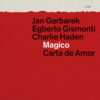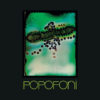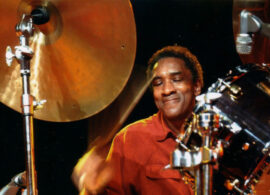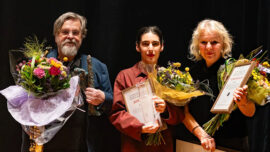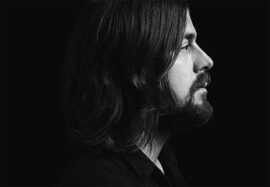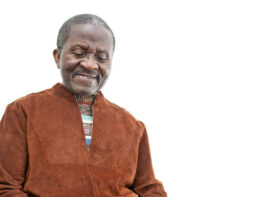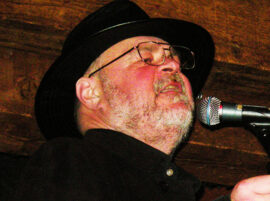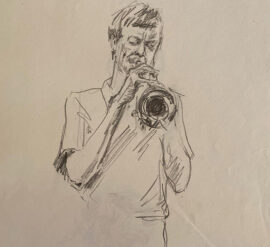Så er sommeren endelig over oss. Så egentlig burde man ikke ha tid til å lytte for mye til musikk, bortsett fra på festivaler. Men det gjør de europeiske jazzmagasinene, og her er hva man lytter til akkurat nå:
Luca Vitali, Giornale della Musica:
ARVE HENRIKSEN & KJETIL HUSEBØ «Sequential Stream» [Smalltown Supersound]
Yves Tassin, JazzMania:
JOHN SCOFIELD «John Scofield» [ECM]
Jos Demol, jazzhalo.be:
JOËLLE LÉANDRE «Live in Calès’ church» [Ayler Records]
Christof Thurnherr, Jazz’n’More:
MARY HALVORSON «Amaryllis / Belladonna» [Nonesuch Records]
Kaspars Zavileiskis, jazzin.lv:
DOOMCANNON «Renaissance» [Brownswood Recordings]
Jacek Brun, www.jazz-fun.de:
REZA ASKARI FEAT. CHRISTOPHER DELL «Roar» [QFTF]
Madli-Liis Parts, Muusika:
BRIAN MELVIN «Sound Color» [Yama Records]
Paweł Brodowski, Jazz Forum:
ADAM BAŁDYCH «Legend» [Anaklasis]
Jan Granlie, salt-peanuts.eu:
HORACE TAPSCOTT «Legicies For Our Grandchildren» [Darktree Roots Series]
Christine Stephan, Jazzthetik:
ANTONIO SÁNCHEZ «Shift (Bad Hombre vol. II)» [Warner Music]
Viktor Bensusan, jazzdergisi.com:
NICOLE JOHÄNNTGEN «Solo II» [Selmabird Records]
Henning Bolte, Written in Music:
MARTA WARELIS «A Grain of Earth» [Relative Pitch Records]
Sebastian Scotney, LondonJazz News (UK):
GARETH WILLIAMS «Short Stories» [Miles Music]
Patrik Sandberg, Jazz:
CHARLES LLOYD «Trio of Trios» [Blue Note]
Cim Meyer, Jazz Special:
ANDERS KOPPEL «Mulberry Street Symphony» [Cowbell/Unit]
Lars Mossefinn, Dag og tid:
GARD NILSSEN ACOUSTIC UNITY «Elastic Wave» [ECM]
Matthieu Jouan, citizenjazz.com:
JEPPE ZEEBERG «Conventional» [Selfreleased]
Axel Stinshoff, Jazz thing:
JULIA HÜLSMANN QUARTET «The Next Door» [ECM]
Why did I choose –
Jacek Brun:
If jazz today means creative musical thinking, limitless sonic imagination and improvisational ability, then this album is pure jazz. It is a kind of conglomerate that combines many opposites and contrasts, a surprising recording, but full of harmony, thoughtful and above all
unique.
Paweł Brodowski:
Adam Bałdych’s newest effort should be celebrated as an artistic event. It is his 11th album recorded under his own name. Surpsingly, it has not been released by ACT Music, but by Anaklasis, a label of the Polish PWM Editions, which favors experiments and crossing music boudaries.
Legend brings together two different worlds and epochs: 19th century classical music and contemporary jazz. Baldych is rediscovering and reimagining the music of the Polish iconic violin virtuoso Henryk Wieniawski (1835 – 1880). He has chosen some of the old master’s best known pieces, giving them fresh, carefully prepared interpretations, adding new harmonies and a jazz touch, while preserving the original spirit of Slavic lyricism and folklore.
Adam is supported by his own quintet of seasoned jazz players (piano, tenor sax, bass and drums), undertaking this journey in partnership with classical violinist Agata Szymczewska, a friend of 20 years from his home town of Gorzów Wielkopolski, a winner of the Henryk Wieniawski Violin Competition. She plays a 1755 Nicolo Gagilano violin loaned to her by Anne-Sophe Mutter, while Bałdych also uses a low-register Renaissance violin, allowing both to achieve a wide palette of colors and sonoristic effects. Legend is Bałdych’s most mature effort yet, offering inspired music of subtlety and sheer beauty.
Jan Granlie:
In recent years, the French record label DarkTree has released several discs with the american piano player Horace Tapscotts music, and at salt peanuts*, we have previously reviewed four of them. Now the fifth release is out, and here we get Tapscott alongside with saxophonist Michael Session, trombonist Thurman Green, bassist Roberto Miranda and drummer Fritz Wise, plus vocalist Dwight Trible. The recordings were made at the club Catalina’s Run on 18 – 20 December 1995, and we get six compositions of which Tapscott is responsible for two, and all the songs show what an excellent orchestra leader and pianist he was.
They start with his driving «Ballad for Deadwood Dick», where we get an excellent trombone solo from Green, and from there and out it’s pure joy. They move to the traditional «Motherless Child», where Dwight Tribe is the vocalist and Green delivers another solid trombone solo. Here we get a brilliant piano solo by Tapscott, before we get Tapscott’s «Breakfast at Bongo’s», which is a lovely, slightly jam-influenced song that swings impeccably, Carmel Crunk’s «Close to Freedom», also with Trible as vocalist, Miles Davis’ «The Theme», which is performed in a loose and original way, with brilliant piano playing, before ending with Linda Hill’s «Little Africa», which fades out as the concert’s encore. The audience really love the concert and clearly express it between the songs. And throughout, it is the inspiration from Africa that stands out as the main element in the music. Not in the same way as Dollar Brand, Chris McGregor and Sean Bergin’s music, but all the way with an African element, especially in Tapscott’s playing which makes the record to a party.
This is, perhaps, the most «public-friendly» of the records that have now come out with Tapscott the last years, and it swings all the way through in an excellent way. The whole band is constantly on their toes and delivers brilliant playing, and although not many of the musicians are well known in today’s jazz, these are musicians you should check out. And all Tapscott recordings should be in any self-respecting record collection. Because this is delicious, creative and exciting music that you don’t hear too much of in today’s jazz.
Viktor Bensusan:
If you haven’t known about Nicole Johänntgen until today, Now Is The Time … She exhibits her great artistry in simplicity. Her style is unique with reminiscences of Coleman Hawkins, her compositions are unique with touches of Bartok. Her courage and success in playing solo is purely Johänntgen …
Sebastian Scotney:
How can it possibly be that a pianist as good as Gareth Williams, fondly remembered for work with US3, Claire Martin, Pee Wee Ellis and a host of other Americans, hasn’t released an album in his own name since «Shock» (Linn) with his Power Trio with Laurence Cottle and Ian Thomas? That album made several best-of lists in 2009. The wait for this next one has been far too long.
As an improviser Gareth Williams has the “constructor’s urge”. Every phrase, every voicing develops an argument, a sense of story or flow, and yet there is invariably also thoughtfulness and emotion. Here Williams plays in trio with Martin France on drums and, in turn, with one of two great bassists: Palle Danielsson and Chris Laurence. This album needs to be listened to deeply and repeatedly to reveal its happy secrets…and its wonderful story-telling.
Henning Bolte:
Marta Warelis (1986), pianist of Polish origin from Amsterdam, has given the nine pieces of her solo album imaginative titles beginning (!) with «echoes» and ending with “ashes to sea» – a captivating poetic throw that in both cases enters on a magical light toe. Actually it doesn’t die down in the end but can recurse as soft echo.
My own key words to characterize the music making of Warelis are these: moving on quiet soles, tonal sliding, wavering heights, abruptly moving out/into forms, agile acoustic sampling, indefinable sound gestalt, strong groove, scraps of dreams, elegiac moments, driven by the magic of things, pranks, surrealistic shifts. And yes, she does it all, boldly and mildly mischievous, working on the whole body and interior fitting of present day acoustic piano machinery. Precisely because she doesn’t stage it pompously as fireworks but keeps it ‘small’, sticks towards ‘little’ sharp ideas and ‘tiny’ twists, it acquires its very own playful, convincing magic. As part of the game there are yikes- and wait-a-moment sensations for listeners leading into re-sets drawing them further into intense intimate Klangerleben as butterfly effect.
And, of course, with what she does and how she does it, Marta Warelis meanwhile is a recognized force in the field of improvised music in Europe. This album underscores it emphatically. She is a dedicated and humble master of her craft and will be a stirring and charming enrichment of the concert sceneries.
Matthieu Jouan:
This new digital album presents two aspects of Jeppe Zeeberg’s music: solo variations on Haydn’s Arietta (a wonder of creativity and harmonious sounds) and his regular quartet Jeppe Zeeberg and the Absolute Pinnacle of Human Achievement. The refreshing compositions are full of energy and overflowing musicality and the cover of «Barbie Girl» is like a barbecued doll!
Yves Tassin:
John Scofield finally alone.
Jos Demol:
Like all improvisers, this bassist is a team player, but you only hear the real Joëlle Léandre when she is all alone on stage, like here during the Souillac en Jazz festival. The place of the event was the small church of Saint-Jacques in Calès, a dream location for such a concert.
Her personal trademark remains starting the double bass with the bow. With every performance, Léandre always manages to come up with something new, just like a thoughtful author of short stories. From assertive to rather aggressive or purely poetic, the «grande dame» covers the whole panorama. She is a master at building suspense and unexpected action moments. In crescent passages, for example, she sometimes omits the climax. The familiar shamanic are not lacking either. Ideal soundtrack to (re)read Margaret Atwood collection of short stories Bluebeard’s Egg. (Georges Tonla Briquet)
Kaspars Zavileiskis:
A continuation of the British new wave of jazz, touching a more relaxed musical sphere, but reminding of social injustice in the modern world. Bright work that once again underlines the super successful results of the British alternative jazz school (Kinetica Bloco,Tomorrow’s Warriors). Renaissance allows you to immerse yourself in the chill-out zone of modern London jazz, especially when the word is given to saxophonist Kaidi Akinnibi. But as befits the same wave, it’s only a small step from chill-out to the exciting groove and spaciousness which tears off the roof of your convertible. That kind of variety multi-instrumentalist DoomCannon manages to fluidly display on his, incredibly, but debut solo album.
Cim Meyer:
Mulberry Street Symphony is a work in seven movements, each one based on one of the photos by Jacob Riis depicting the life among immigrants in New York in the 1880s. Riis – himself an immigrant from Denmark – was overwhelmed by the hard and desolate life among the thousands of immigrants like himself, who had hoped for a better life in the promised land. The work is an eulogy to the life and dreams of these people.
The music is written for a classical symphony orchestra, fronted by Benjamin Koppel (as), Scott Colley (b) and Brian Blade (d), who are colouring, wailing and grooving over the score.
Patrik Sandberg:
Trio of Trios, is an expansive new project by Charles Lloyd. As a sound seeker, Lloyd’s restless creativity has perhaps found no greater manifestation than on his latest project which encompasses three albums each presenting him in a different trio setting. The first album in the series, Trios: Chapel, features Bill Frisell and Thomas Morgan. The second, Trios: Ocean, arrives later this autumn featuring Gerald Clayton and Anthony Wilson. The third, Trios: Sacred Thread, comes out this winter featuring Julian Lage and Zakir Hussain.
Christof Thurnherr:
These two separate but connected suites – Halvorson’s twin debut on Nonesuch Records – could be called the preliminary culmination of a distinct «Anthony Braxton mentorship». It’s been obvious for several years that the still young guitarist is an unmistakenly personal voice in contemporary jazz. Yes, she is part of New York’s Downtown Scene but she is one of only few who propel its sound forward. Yes, on her new releases she includes a string quartet but the result is situated lightyears beyond chamber jazz. Being the sole composer Halvorson places her instrument into the service of these new sounds thereby showing the mere excellency of her musicianship.

